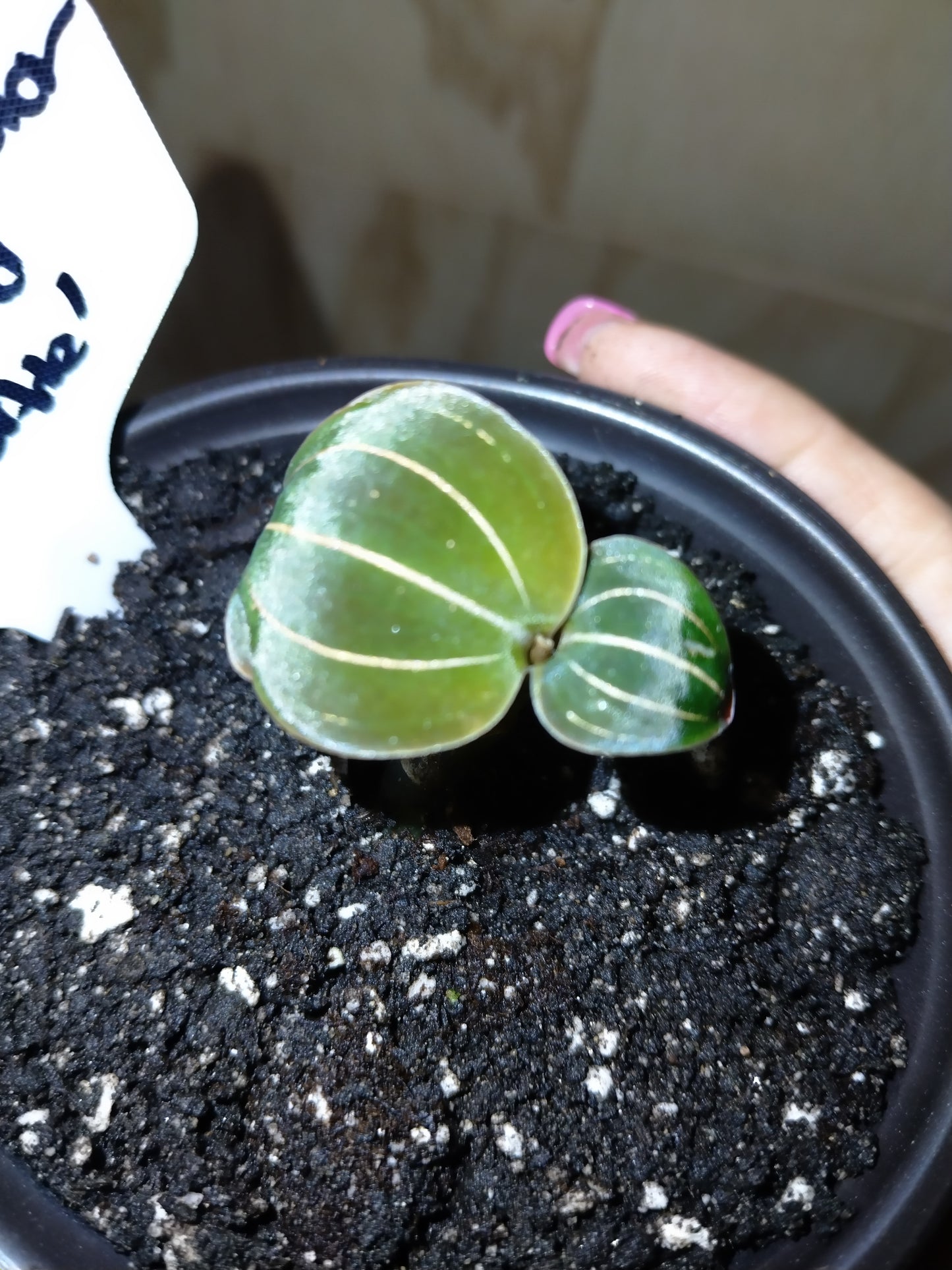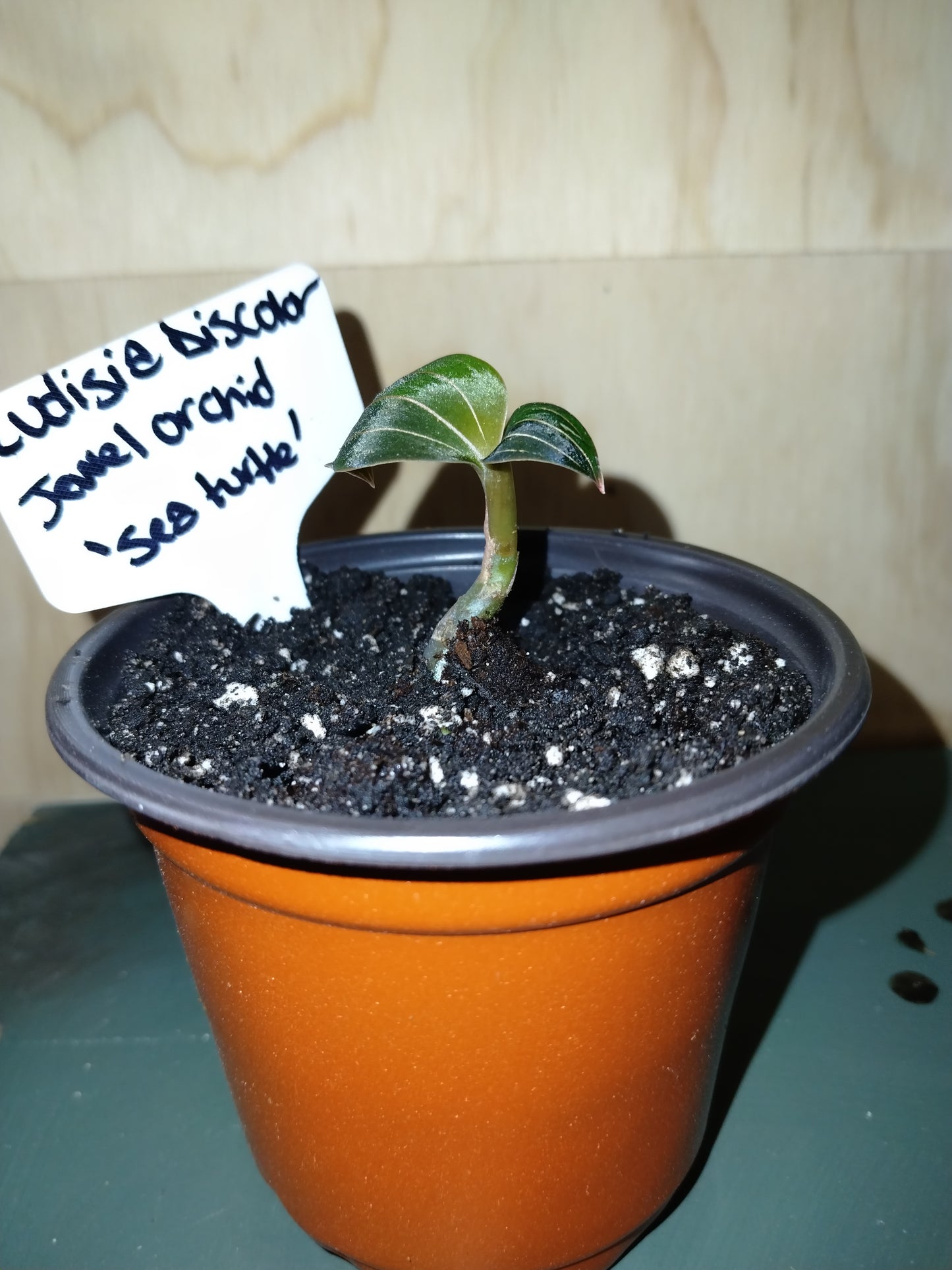Sea Turtle Jewel Orchid
Sea Turtle Jewel Orchid
🌿 Ludochilus ‘Sea Turtle’ Jewel Orchid
-
Hybrid origin: It’s a cross between Ludisia discolor var. nigrescens and Anoectochilus formosanus.
-
Genus name: “Ludochilus” is a portmanteau of the two parent genera (Ludisia + Anoectochilus) to reflect its hybrid nature.
-
Focus: Primarily grown for its foliage rather than its flowers — the leaves display a striking pattern, reminiscent of sea turtle shells, hence the name.
🎨 Appearance
-
Leaves: Deep purplish-green to near‐maroon with shimmering veins in white, gold, or pink tones. The venation tends to be more distinct and clean-lined (more linear “striped”/“shell-patterned”) than many Ludisia discolor forms.
-
Texture: As with jewel orchids, foliage is velvety. It gleams or shimmers under light
-
Size / Habit: A low, spreading plant. Leaves are fairly small; overall height modest (6-8 in.) but can trail or spread more when mature.
☀️ Light, Temperature, & Humidity
-
Light: Prefers low to medium indirect light. Bright but diffused light helps highlight the leaf veins without burning edges. Avoid direct sun.
-
Temperature: Intermediate to warm. Minimum indoor temp around 60°F (~15°C). Does fine in normal home temps above that.
-
Humidity: Likes humidity, but isn’t extremely demanding. Moderately high humidity (60-80%) gives best results. Terrariums are ideal environments.
💧 Soil & Watering
-
Soil / Growing medium: Terrestrial orchid mix. Often a mossy or peat-based, well-draining but moisture-retentive mix. Some growers use mixtures that include moss, orchid bark, perlite.
-
Watering: Keep soil lightly moist. Don’t let it dry out completely for long; but avoid soggy soil (root rot risk). Let top layer dry a bit before watering again.
🌸 Flowers
-
Produces small white flowers in winter (or when mature). The blooms are not its main show; the foliage is what people grow it for.
⚠️ Common Challenges / What to Watch Out For
| Problem | Likely Cause | Solution / Prevention |
|---|---|---|
| Leaf edges or tips browning | Low humidity, too strong light, or inconsistent watering | Increase humidity, soften light, ensure consistent watering regime |
| Pale or washed-out venation | Light too low or mix too rich / too much nitrogen | Increase light (indirect) and ensure soil isn’t overfertilized |
| Root rot / soft stems | Overwatering or poor drainage | Use well-draining soil, ensure pot has drainage, let top soil dry slightly |
| Mislabelled plants in market | Popularity leads to misidentification (many “Sea Turtle” labels may actually be Ludisia forms) | Buy from reputable sources; compare leaf venation pattern, color, and texture before buying. |
👍 Care Tips for Best Results
-
Use a shallow pot if possible, since it spreads more than grows tall.
-
Provide a layer of moss or moisture-retaining substrate above or around roots to keep moisture stable.
-
Rotate plant occasionally so leaves get even light, which helps with symmetrical growth and color.
-
Mist or use a humidifier, especially in dry indoor air.
-
Fertilize lightly during the growing season; do not overdo it.
Product features
Product features
Materials and care
Materials and care
Merchandising tips
Merchandising tips
Share



